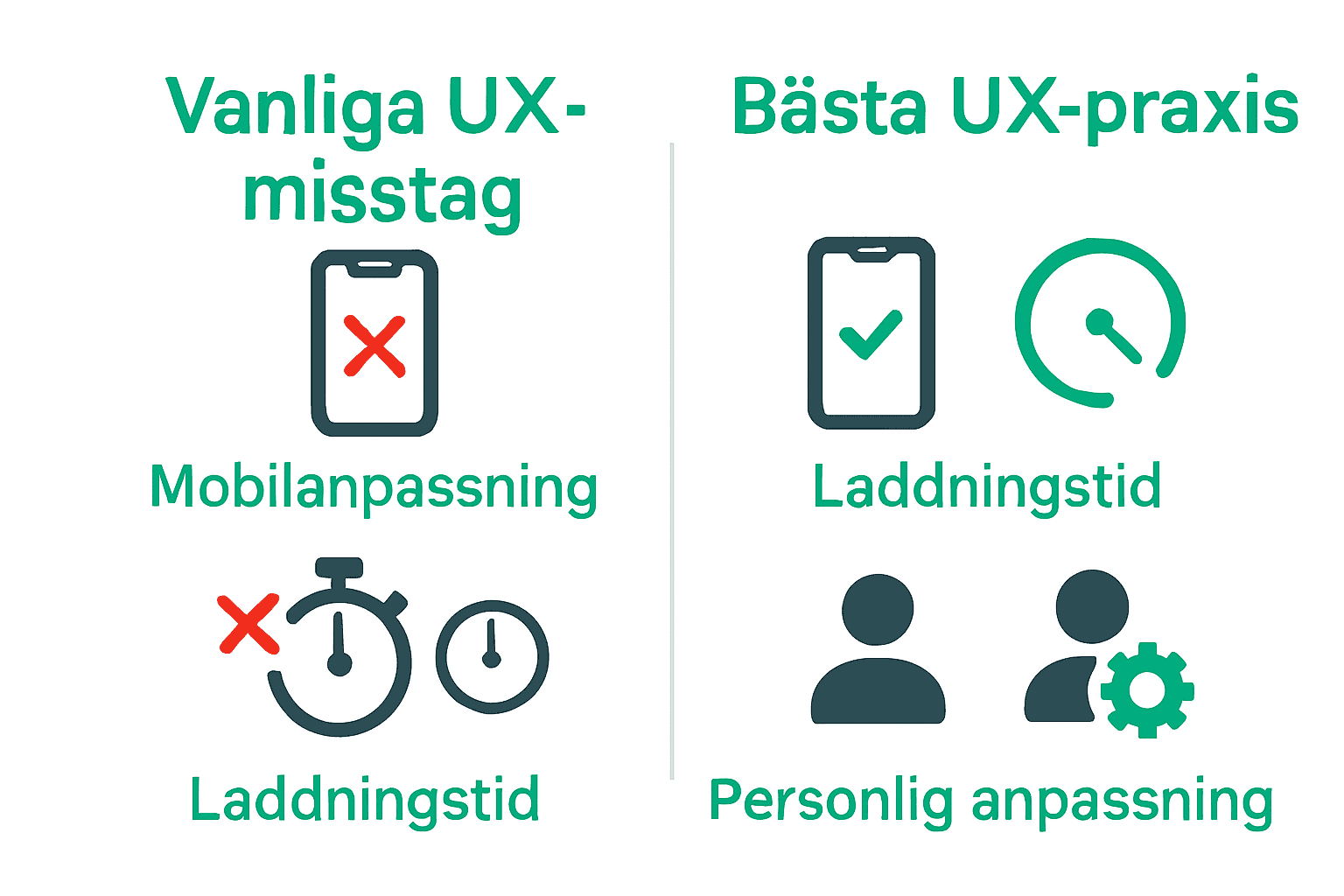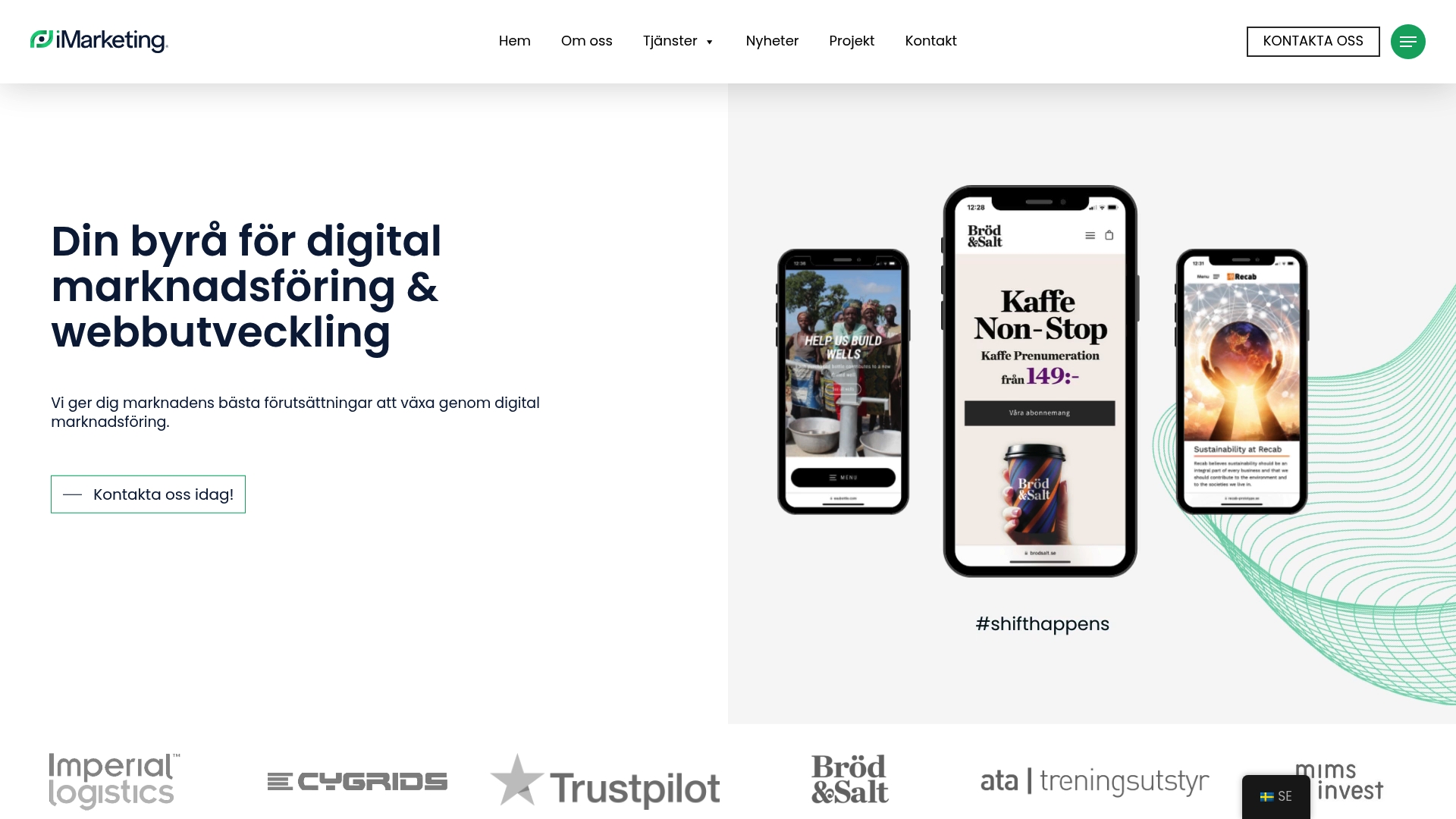Over 80 percent of visitors leave a website if the experience feels complicated or confusing. For businesses that want to succeed online, user experience plays a crucial role. When marketing and UX go hand in hand, not only conversions increase, but also customer loyalty and engagement. Here you will learn how small changes in design and functionality can actually make a big difference to your bottom line.
Table of contents
- What does UX mean in marketing?
- How UX impacts the customer journey and conversions
- UX Strategies for Digital Marketing Success
- Common mistakes in UX and marketing
- Best practices for UX-driven marketing campaigns
Key points
| Point | Details |
|---|---|
| Understand the user's needs | Focus on creating a positive and personalized user experience to increase conversions. |
| Optimize the customer journey | Create a seamless and engaging journey to effectively guide customers towards purchasing decisions. |
| Avoid common mistakes | Don't ignore mobile-friendliness and don't complicate the purchasing process to avoid losing customers. |
| Implement data-driven strategy | Use A/B testing and user data to continuously optimize marketing campaigns and UX. |
What does UX mean in marketing?
UX (User Experience) in marketing is about creating a seamless and positive experience for potential customers throughout their digital journey. It is a strategy that goes far beyond traditional marketing and focuses on understanding and satisfying the user's needs, expectations, and emotional responses.
The essence of UX marketing lies in mapping and optimizing every touchpoint between a company and its users. This means analyzing and improving website navigation, designing intuitive interfaces, creating engaging content, and ensuring smooth user interaction. A successful UX strategy aims to create positive emotional connections that convert visitors into loyal customers.
Some key elements of UX marketing include:
- User-friendly web design
- Fast and responsive technical performance
- Personalized user experiences
- Clear and accessible communication
- Intuitive navigation system
For small and medium-sized businesses, digital marketing implementation be crucial to understanding and improving their UX strategy. By focusing on user needs and creating valuable, immediately accessible solutions, companies can build stronger relationships and increase their conversion rates.
How UX impacts the customer journey and conversions
UX plays a critical role in shaping and improving the entire customer journey, from first contact to final conversion. By creating a seamless, intuitive, and engaging experience, companies can significantly influence the customer’s decision-making process and increase the likelihood of successful conversions.
The customer journey can be divided into several critical phases where UX directly impacts customer behavior and propensity to make a purchase. In the awareness phase, it’s about creating appealing and easy-to-navigate interfaces that quickly convey the value of a product or service. In the consideration phase, UX becomes even more important – here the user needs to be able to easily compare options, understand benefits, and feel confident in the brand.
Important aspects that affect conversion rates include:
- Web page loading speed
- Responsive design for different devices
- Clear and easy-to-understand purchasing processes
- Minimum number of clicks to complete a purchase
- Transparent and easily accessible product information
By improving conversion optimization companies can systematically understand and improve every step of the customer journey. The goal is to create such a frictionless and positive experience that potential customers are naturally guided towards completing a purchase or desired action.

UX Strategies for Digital Marketing Success
Successful digital marketing requires sophisticated UX strategies that go beyond traditional marketing methods. By putting the user at the center, companies can create more engaging, personalized, and effective digital experiences that drive both brand loyalty and conversions.
One holistic UX strategy involves analyzing and optimizing every digital touchpoint, from website design to content strategy and customer interactions. This includes creating intuitive navigation systems, developing responsive interfaces that work seamlessly across devices, and implementing personalized user flows that simplify the customer decision-making process.
Key elements of a successful UX strategy include:
- Data-driven user analysis
- Continuous testing and optimization
- Focus on usability and accessibility
- Fast and responsive digital experiences
- Consistent brand storytelling across all channels
With the right digital tools can companies systematically improve their UX strategy and create more meaningful digital experiences that both attract and retain customers. The goal is to transform every digital encounter into a positive, memorable, and value-creating interaction.
Common mistakes in UX and marketing
At the intersection of UX and marketing, there are several critical pitfalls that can undermine a company's digital strategy. Many organizations make the mistake of focusing too much on sales messaging and too little on the actual user experience, resulting in ineffective and unengaging digital touchpoints.
One of the most frequently occurring mistakes is to treat the website as a one-way communication channel instead of an interactive experience. This often means overly sales-oriented content, complex navigation structures, and a lack of personalization that causes potential customers to quickly lose interest and leave the page.
Key mistakes to avoid include:
- Ignore mobile usability
- Slow, poorly performing web pages
- Complex and cumbersome purchasing processes
- Lack of clear and immediate value proposition
- Non-responsive design on different devices
By studying blogs about marketing can companies learn more about how to avoid these common pitfalls and create more engaging digital experiences. The ultimate goal is to create a harmonious balance between marketing messaging and genuine user-centered design that truly meets customer needs and expectations.

Best practices for UX-driven marketing campaigns
Successful UX-driven marketing campaigns require a thoughtful strategy that puts the user at the center and creates meaningful, engaging digital experiences. This means going far beyond traditional marketing methods and instead focusing on understanding and anticipating user needs, expectations, and behavior patterns.
One holistic campaign strategy is about creating a seamless and personalized user journey across all digital touchpoints. This includes developing responsive design solutions, creating intuitive navigation systems, and implementing data-driven personalization that makes every interaction more relevant and engaging for the individual user.
Key elements for successful UX-driven campaigns include:
- In-depth user research and personas
- Adaptive and personalized content strategies
- Continuous A/B testing and optimization
- Seamless integration between different digital channels
- Clear and immediately communicated value propositions
With modern email marketing strategies can further refine their UX-driven campaigns and create more targeted, engaging communication experiences. The goal is to transform every marketing effort into a valuable, personalized interaction that builds long-term relationships with customers.
Transform UX challenges into digital success
Creating an engaging and frictionless user experience is crucial to digital marketing success. The article clearly highlights key challenges such as slow websites, complex checkout processes, and lack of personalization. These obstacles risk losing potential customers and reducing conversions. The goal is to weave an intuitive UX with powerful marketing strategies to create loyal and satisfied users.
On iMarketing.se We understand how critical this is to your business's digital growth. We offer end-to-end web development and digital marketing solutions that optimize every step of the customer journey. With our help, you get faster, more user-friendly websites and smart strategies that drive results. Learn more about how you can improve conversion optimization and create effective campaigns that put the user in focus.

Ready to take the next step and create a digital presence that captures and retains your customers? Contact us at iMarketing.se today and discover how we can help you transform UX from a challenge to your greatest asset.
Frequently Asked Questions
What is UX and how does it affect marketing?
UX, or user experience, is about creating a positive and seamless experience for users, which in turn can increase conversions and customer loyalty in marketing.
How can I improve my website for better UX?
To improve the UX of your website, you can focus on user-friendly design, optimize loading times, create intuitive navigation systems, and offer clear product information.
What strategies should I use for UX-driven marketing campaigns?
UX-driven campaigns should include user research, content personalization, continuous A/B testing, and seamless integration between different digital channels to drive engagement.
What are the most common mistakes in UX and marketing?
Common mistakes include ignoring mobile adaptation, having slow websites, complex purchasing processes, and lacking a clear value proposition that can negatively impact the user's decision.


